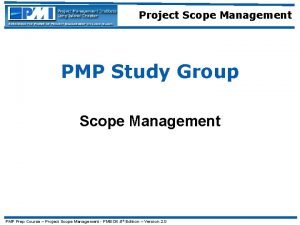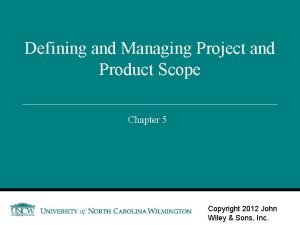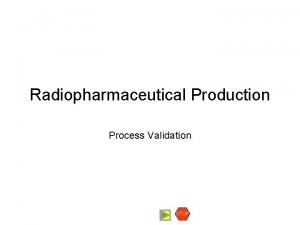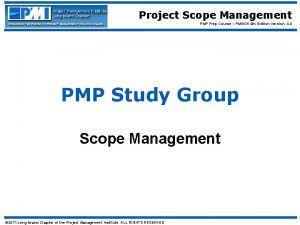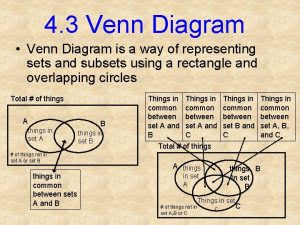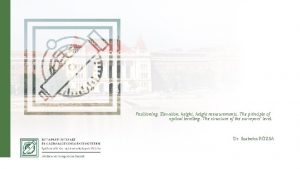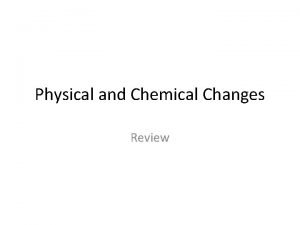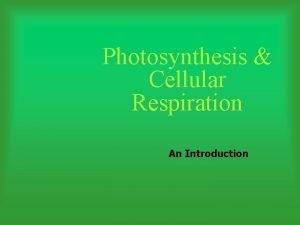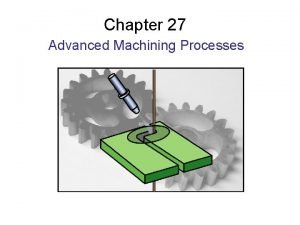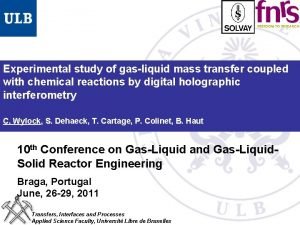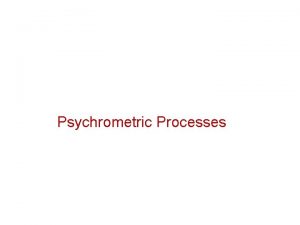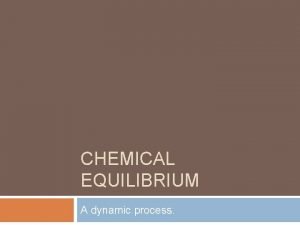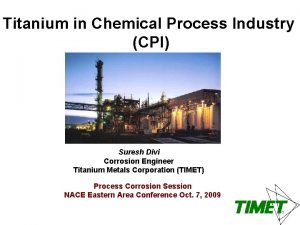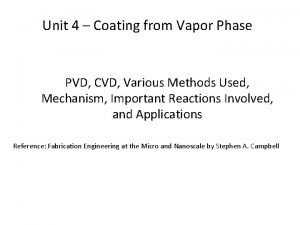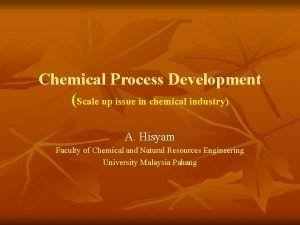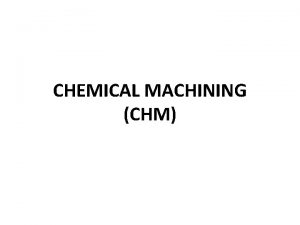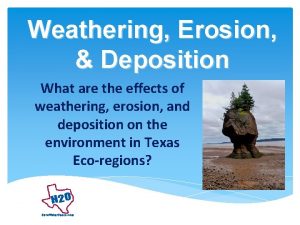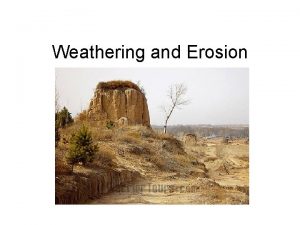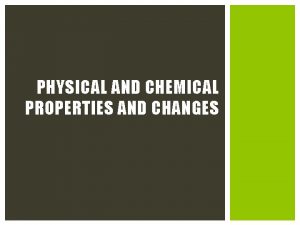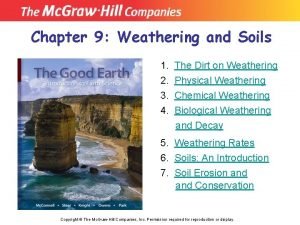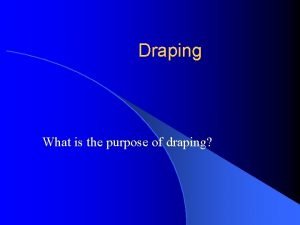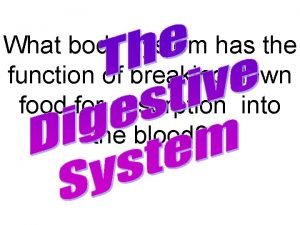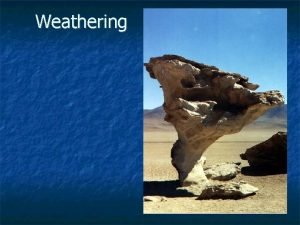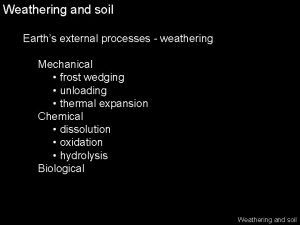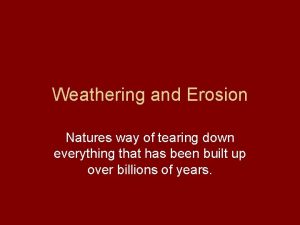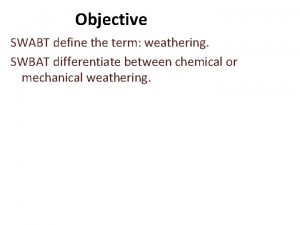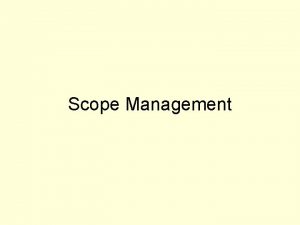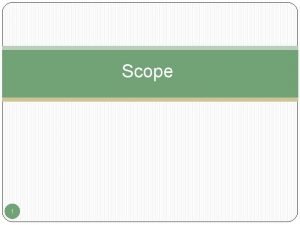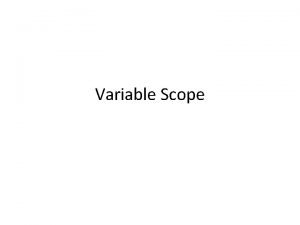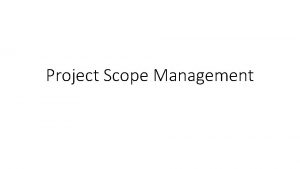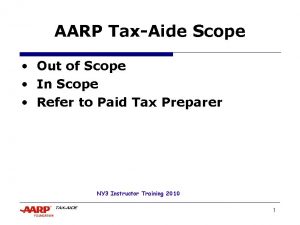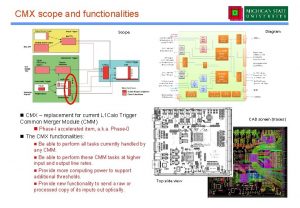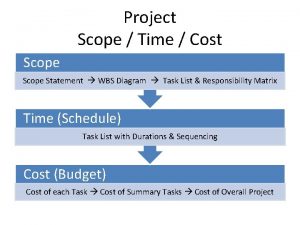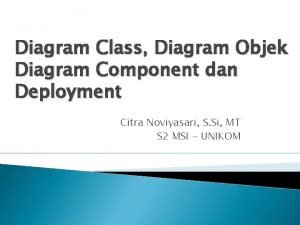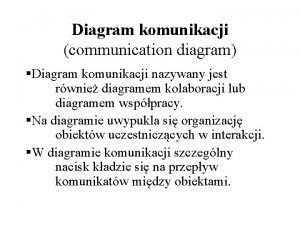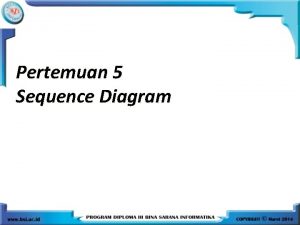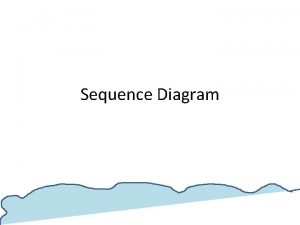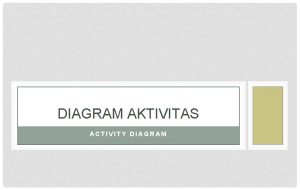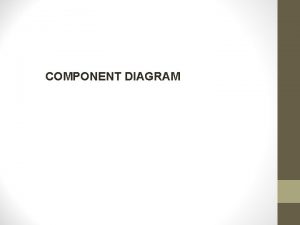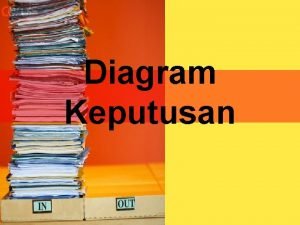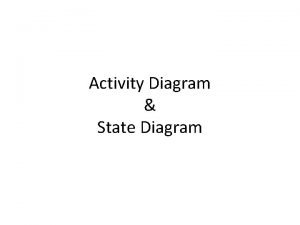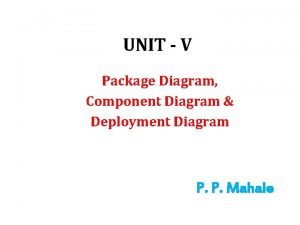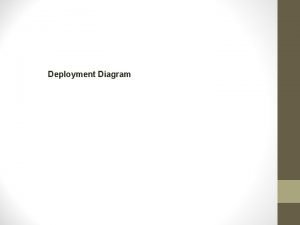CHEMICAL PROCESS DIAGRAM Chemical Process Diagram SCOPE Students











































- Slides: 43

CHEMICAL PROCESS DIAGRAM

Chemical Process Diagram SCOPE: Students will be able to know: q Type of chemical process diagram - Block Flow Diagram (BFD) - Process Flow Diagram (PFD) - Piping and Instrumentation Diagram (P&ID) q How to read and draw BFD, PFD and P&ID q Process equipments symbol and numbering

Chemical Process Diagram 3 Levels of Diagram -Block Flow Diagram (BFD) -Process Flow Diagram (PFD) -Piping and Instrumentation Diagram (P&ID)

The Block Flow Diagram (BFD) BLOCK FLOW DIAGRAM (BFD)

The Block Flow Diagram (BFD) BFD shows overall processing picture of a chemical complex: -Flow of raw materials and products may be included on a BFD -BFD is a superficial view of facility – Ch. E information is missing

The Block Flow Diagram (BFD) Example 1: Mixed Gas 2610 kg/hr Toluene, C 7 H 8 10, 000 kg/hr Reactor Hydrogen H 2 820 kg/hr C 6 H 6 Gas Separator CH 4 C 7 H 8 Benzene, C 6 H 6 8, 210 kg/hr Mixed Liquid 75% Conversion of Toluene Reaction : C 7 H 8 + H 2 C 6 H 6 + CH 4 Figure 1. 1: Block Flow Diagram for the Production of Benzene

Example 2 Production of Ethane from Ethanol is feed to continuous reactor with presence of Acid Sulphuric catalyzer to produce ethylene. Distillation process then will be applied to separate ethylene-H 2 O mixture. Ethylene as a top product is then condensate with condenser to perform liquid ethylene. Hydrogenation of ethylene applies in another reactor with presence of Nickel catalyzer to produce ethane as a final product. Develop BFD for these processes. CH 3 CH 2 OH H 2 SO 4 CH 2=CH 2 + H 2 Ni CH 2=CH 2 + H 2 O CH 3 Hot water out Ethylene liq. CH 2 (l) Ethylene, CH 2 (g) Ethanol, C 2 H 5 OH H 2 SO 4 Cold water in Reactor 1 Ethane, CH 3 CH 2 H 2 O Distillation column H 2 O Hydrogen, H 2 Ni Reactor 2

The Block Flow Diagram (BFD) Exercise 1: Ammonia-air mixture is feed to the bottom stream of an absorber with flow rate of 10 L/min. Water then feed to the upper stream of the same absorber with desired flow rate of 5 L/min. There are two outputs from the absorber where upper stream is insoluble NH 3 and bottom stream is NH 3 -Water mixture. This NH 3 -water mixture then feed up to a batch distillation column. The column produces ammonia gas as a top product which this product then will be condensate with a condenser to produce liquid ammonia. Develop Block Flow Diagram (BFD) for this process.

The Block Flow Diagram (BFD) Answer 1 Hot water out Insoluble ammonia Ammonia liquid Water 5 L/min Absorber Ammonia gas Condenser Batch Distillation Cold water in Ammonia-air mixture 10 L/min Ammonia-water mixture

The Block Flow Diagram (BFD) Exercise 2: Ethanol-water mixture is feed to a batch distillation column. This distillation process will produce ethanol vapour at the top product which then condensate to produce liquid ethanol which then collected into a distillate product tank. This liquid ethanol and an acetic acid liquid from a acid feed tank are then feed to a reactor. An exothermic chemical reaction will producing ethyl acetate (a type of ester). Draw BFD for this chemical process.

The Block Flow Diagram (BFD) Answer 2 Hot water out Condenser Ethanol liq. Ethyl acetate Reactor Batch distillation Cold water in Distillate product tank Ethanol-water mixture Acid feed tank

The Process Flow Diagram (PFD) PROCESS FLOW DIAGRAM

The Process Flow Diagram (PFD) SCOPE: Students will be able to know: q Process Unit symbology q How to read and draw PFD q Process equipments symbol and numbering

The Process Flow Diagram (PFD) PFD shows all process engineering information: -The topology of the process – showing the connectivity of all the streams and the equipment. -Use appropriate conventions – consistency is important in communication of process information.

The Process Flow Diagram (PFD) PFD will contains the following information: - All major pieces of equipment (descriptive name, unique equipment no. ), pumps and valves. - All the utility streams supplied to major equipments such as steam lines, compressed air lines, electricity, etc. - All process flow streams: identification by a number, process condition, chemical composition. - Basic control loops: showing the control strategy used to operate the process under normal operations.

The Process Flow Diagram (PFD)

The Process Flow Diagram (PFD) PFD will contains the following information: - All major pieces of equipment (descriptive name, unique equipment no. ), pumps and valves. - All the utility streams supplied to major equipments such as steam lines, compressed air lines, electricity, etc.

The Process Flow Diagram (PFD) Process Unit Symbology Symbol Description Heat exchanger H 2 O Water cooler S Steam heater Cooling coil

The Process Flow Diagram (PFD) Process Unit Symbology Symbol Description Heater coil Centrifugal pump Turbine type compressor Pressure gauge

The Process Flow Diagram (PFD) Process Unit Symbology Symbol Name Description Stripper A separator unit used commonly to liquid mixture into gas phase Absorber A separator unit used commonly to extract mixture gas into liquid phase

The Process Flow Diagram (PFD) Process Unit Symbology Symbol Name Description Distillation A separator unit used commonly to crack liquid contains miscellaneous component fractions. column or Liquid mixer A process unit that used to mix several components of liquid.

The Process Flow Diagram (PFD) Process Unit Symbology Symbol Name Description Reaction chamber A process unit where chemical process reaction occurs Horizontal tank A unit to store liquid or gas. or cylinder

The Process Flow Diagram (PFD) Process Unit Symbology Symbol Name Description Boiler A unit for heating. Centrifuge A separator unit that to physically separated liquid mixture. (exp: oil-liquid)

The Process Flow Diagram (PFD) Valve Symbology Symbol Name Gate Valve Globe Valve Ball Valve Check Valve Butterfly Valve

The Process Flow Diagram (PFD) Valve Symbology Symbol Name Relief Valve Needle Valve 3 -Way Valve Angle Valve Butterfly Valve

Example 3 Production of Ethane from Ethanol is feed to continuous reactor with presence of Acid Sulphuric catalyzer to produce ethylene. Distillation process then will be applied to separate ethylene-H 2 O mixture. Ethylene as a top product is then condensate with condenser to perform liquid ethylene. Hydrogenation of ethylene applies in another reactor with presence of Nickel catalyzer to produce ethane as a final product. Develop PFD for these processes. H 2 SO 4 CH 3 CH 2 OH CH 2=CH 2 + H 2 O CH 3 Ni R-100 P-100 T-100 E-100 P-101 Reactor Pump Distillation Column Condenser Pump Reactor Hot water out Ethylene liq. E-100 V-104 CV-100 Ethanol H 2 SO 4 V-100 V-101 V-103 R-100 T-100 Cold water in CV-101 V-105 V-102 V-106 Hydrogen V-107 Ni R-101 P-100 H 2 O P-101 Ethane

The Process Flow Diagram (PFD) Exercise 3: Ammonia-air mixture is feed to the bottom stream of an absorber with flow rate of 10 L/min. Water then feed to the upper stream of the same absorber with desired flow rate of 5 L/min. There are two outputs from the absorber where upper stream is insoluble NH 3 and bottom stream is NH 3 -Water mixture. This NH 3 -water mixture then feed up to a batch distillation column. The column produces ammonia gas as a top product which this product then will be condensate with a condenser to produce liquid ammonia. Develop Process Flow Diagram (PFD) for this process.

The Process Flow Diagram (PFD) Answer 3 T-100 T-101 E-100 Absorber Column Batch Distillation Column Condenser Insoluble ammonia gas Hot water out Ammonia gas Water 5 L/min Cold water in Ammonia-air mixture 10 L/min Ammonia-water mixture Ammonia liquid

The Process Flow Diagram (PFD) Process Unit Tagging and Numbering Process Equipment General Format XX-YZZ A/B XX are the identification letters for the equipment classification C - Compressor or Turbine E - Heat Exchanger H - Fired Heater P - Pump R - Reactor T - Tower TK - Storage Tank V - Vessel Y - designates an area within the plant ZZ - are the number designation for each item in an equipment class A/B - identifies parallel units or backup units not shown on a PFD Supplemental Information Additional description of equipment given on top of PFD

The Process Flow Diagram (PFD) Y Letter Area No. 1 Area No. 2 Area No. 3

The Process Flow Diagram (PFD) A/B Letter Example Ethylene Hot water out Ethylene liq. Ethylene Cold water in Hot water out Ethylene liq. Cold water in Ethanol H 2 SO 4 Hydrogen Ethane Hydrogen Ni H 2 O Ethane Ni H 2 O P-100 A/B P-100 B In PFD In real plant, it means like above

The Process Flow Diagram (PFD) PFD will contains the following information: - All process flow streams: identification by a number, process condition, chemical composition.

The Process Flow Diagram (PFD) Stream Numbering and Drawing - Number streams from left to right as much as possible. - Horizontal lines are dominant. Yes No No

Example 4 R-100 P-100 T-100 E-100 P-101 Reactor Pump Distillation Column Condenser Pump Reactor Hot water out Ethylene liq. E-100 6 V-104 Cold water in V-106 CV-101 T-100 CV-100 V-105 Ethanol 1 H 2 SO 4 V-101 V-100 5 V-102 4 V-103 R-100 V-107 3 2 R-101 8 7 P-100 Hydrogen 9 Ni Ethane 10 H 2 O P-101

The Process Flow Diagram (PFD) (cont. . ) Stream Information -Since diagrams are small not much stream information can be included. -Include important data – around reactors and towers, etc. q. Flags are used q. Full stream data,

The Process Flow Diagram (PFD) (cont. . ) Stream Information - Flag 600 Temperature 300 3 8 24 Pressure 10. 3 Mass Flowrate 108 Molar Flowrate 9 6 7 1 10 600 24 2 5 12 11 4 24 13 Gas Flowrate Liquid Flowrate

Example 5 R-100 P-100 T-100 E-100 P-101 Reactor Pump Distillation Column Condenser Pump Reactor Hot water out Ethylene liq. E-100 6 V-104 Cold water in 25 28 V-106 CV-101 T-100 CV-100 V-105 Ethanol 1 H 2 SO 4 V-101 V-100 5 20 38 V-102 4 V-103 R-100 V-107 3 2 35 31. 0 35 32. 2 P-100 Hydrogen 9 Ni R-101 8 7 Ethane 10 H 2 O P-101

Stream Information - Full stream data, Stream Number 1 2 3 4 5 6 7 8 9 10 Temperature (o. C) 25. 0 35. 0 60. 3 41 38 54. 0 45. 1 Pressure (psi) 28 32. 2 31. 0 30. 2 45. 1 31. 3 24. 0 39. 0 2. 6 Mass flow (tonne/hr) 10. 3 13. 3 0. 82 20. 5 6. 41 20. 5 0. 36 9. 2 20. 9 11. 6 Mole flow (kmol/hr) 108 114. 2 301. 0 1204. 0 758. 8 1204. 4 42. 6 1100. 8 142. 2 244. 0 Vapor fraction

Example 6 R-100 P-100 T-100 E-100 P-101 Reactor Pump Distillation Column Condenser Pump Reactor Hot water out Ethylene liq. E-100 6 V-104 Cold water in 25 28 V-106 T-100 CV-101 V-105 5 Ethanol 1 H 2 SO 4 V-100 V-101 4 3 35 32. 2 38 V-103 R-100 2 20 V-102 Hydrogen 9 Ni V-107 R-101 8 35 31. 0 7 H 2 O Ethane 10 P-101 P-100 Stream Number 1 2 3 4 5 6 7 8 9 10 Temperature (o. C) 25. 0 35. 0 60. 3 41 38 54 45. 1 28 32. 2 31. 0 30. 2 45. 1 31. 3 24. 0 39 2. 6 Mass flow (tonne/hr) 10. 3 13. 3 0. 82 20. 5 6. 41 20. 5 0. 36 9. 2 20. 9 11. 6 Mole flow (kmol/hr) 108 114. 2 301. 0 1204. 0 758. 8 1204. 4 42. 6 1100. 8 142. 2 244. 0 Pressure (psi) Vapor fraction

The Process Flow Diagram (PFD) PFD will contains the following information: - Basic control loops: showing the control strategy used to operate the process under normal operations.

Example 7 R-100 P-100 T-100 E-100 P-101 Reactor Pump Distillation Column Condenser Pump Reactor Hot water out Ethylene liq. E-100 6 V-104 Cold water in LIC 25 28 V-106 T-100 CV-101 V-105 5 Ethanol 1 H 2 SO 4 V-101 4 V-103 R-100 3 35 32. 2 Hydrogen 9 Ni 38 V-100 2 20 V-102 V-107 35 31. 0 7 Ethane 10 R-101 8 H 2 O LIC P-101 P-100 Stream Number 1 2 3 4 5 6 7 8 9 10 Temperature (o. C) 25. 0 35. 0 60. 3 41 38 54 45. 1 28 32. 2 31. 0 30. 2 45. 1 31. 3 24. 0 39 2. 6 Mass flow (tonne/hr) 10. 3 13. 3 0. 82 20. 5 6. 41 20. 5 0. 36 9. 2 20. 9 11. 6 Mole flow (kmol/hr) 108 114. 2 301. 0 1204. 0 758. 8 1204. 4 42. 6 1100. 8 142. 2 244. 0 Pressure (psi) Vapor fraction


QUESTIONS?
 Rizal participated in the student demonstration in madrid
Rizal participated in the student demonstration in madrid Process scope definition
Process scope definition Product scope vs project scope
Product scope vs project scope Master validation plan
Master validation plan Validate scope process
Validate scope process This venn diagram shows sports played by 10 students
This venn diagram shows sports played by 10 students History scope of pharmacognosy
History scope of pharmacognosy Reduced level
Reduced level Chemical reactions section 2 classifying chemical reactions
Chemical reactions section 2 classifying chemical reactions Chapter 7 review chemical formulas and chemical compounds
Chapter 7 review chemical formulas and chemical compounds Section 2 classifying chemical reactions
Section 2 classifying chemical reactions Chemical reactions section 1 chemical changes
Chemical reactions section 1 chemical changes Chapter 7 review chemical formulas and chemical compounds
Chapter 7 review chemical formulas and chemical compounds Are kc and kp equal
Are kc and kp equal Is crumple physical or chemical
Is crumple physical or chemical Photosynthesis and cellular respiration
Photosynthesis and cellular respiration What are the different market forms and meat cuts
What are the different market forms and meat cuts Made by
Made by Physico-chemical process
Physico-chemical process Adiabatic mixing of two air streams example
Adiabatic mixing of two air streams example What is a dynamic process in chemistry
What is a dynamic process in chemistry Galvanic table
Galvanic table Chemical vapour deposition process
Chemical vapour deposition process Chemical process development
Chemical process development Chm machining
Chm machining Mechanical and chemical weathering venn diagram
Mechanical and chemical weathering venn diagram Mechanical and chemical weathering venn diagram
Mechanical and chemical weathering venn diagram Physcial change
Physcial change Mechanical and chemical weathering venn diagram
Mechanical and chemical weathering venn diagram Towel draping
Towel draping Whats physical change
Whats physical change Mechanical and chemical digestion venn diagram
Mechanical and chemical digestion venn diagram Mechanical and chemical weathering examples
Mechanical and chemical weathering examples Weather ing
Weather ing Venn diagram of chemical and mechanical weathering
Venn diagram of chemical and mechanical weathering Mechanical and chemical weathering venn diagram
Mechanical and chemical weathering venn diagram Mechanical and chemical weathering venn diagram
Mechanical and chemical weathering venn diagram Define the term weathering
Define the term weathering Www.socrative.com
Www.socrative.com Articles to write in school magazine
Articles to write in school magazine How to structure a debate
How to structure a debate Welcome canada tax for international students
Welcome canada tax for international students You are welcome dear
You are welcome dear Ivc summer classes for high school students
Ivc summer classes for high school students

